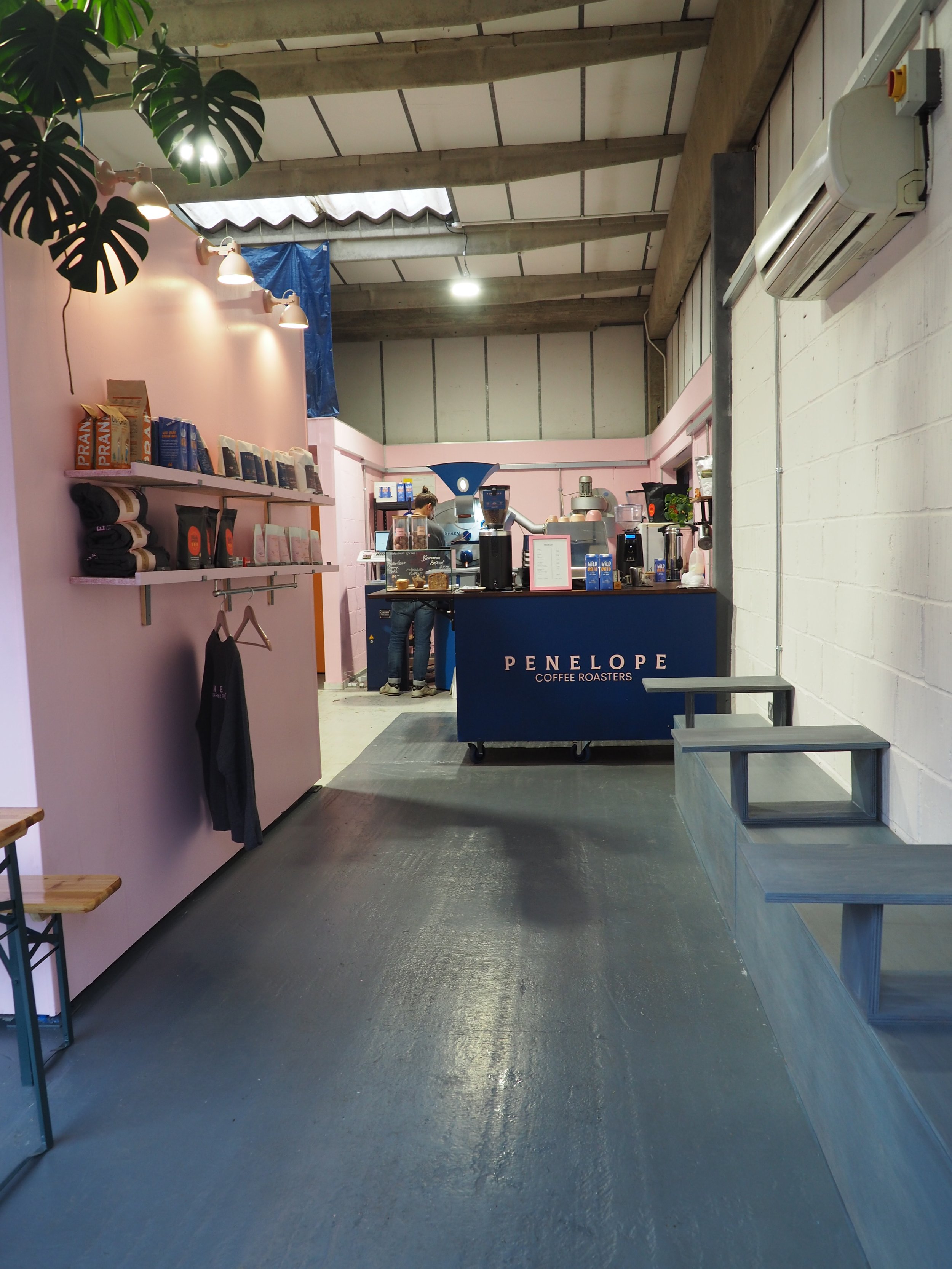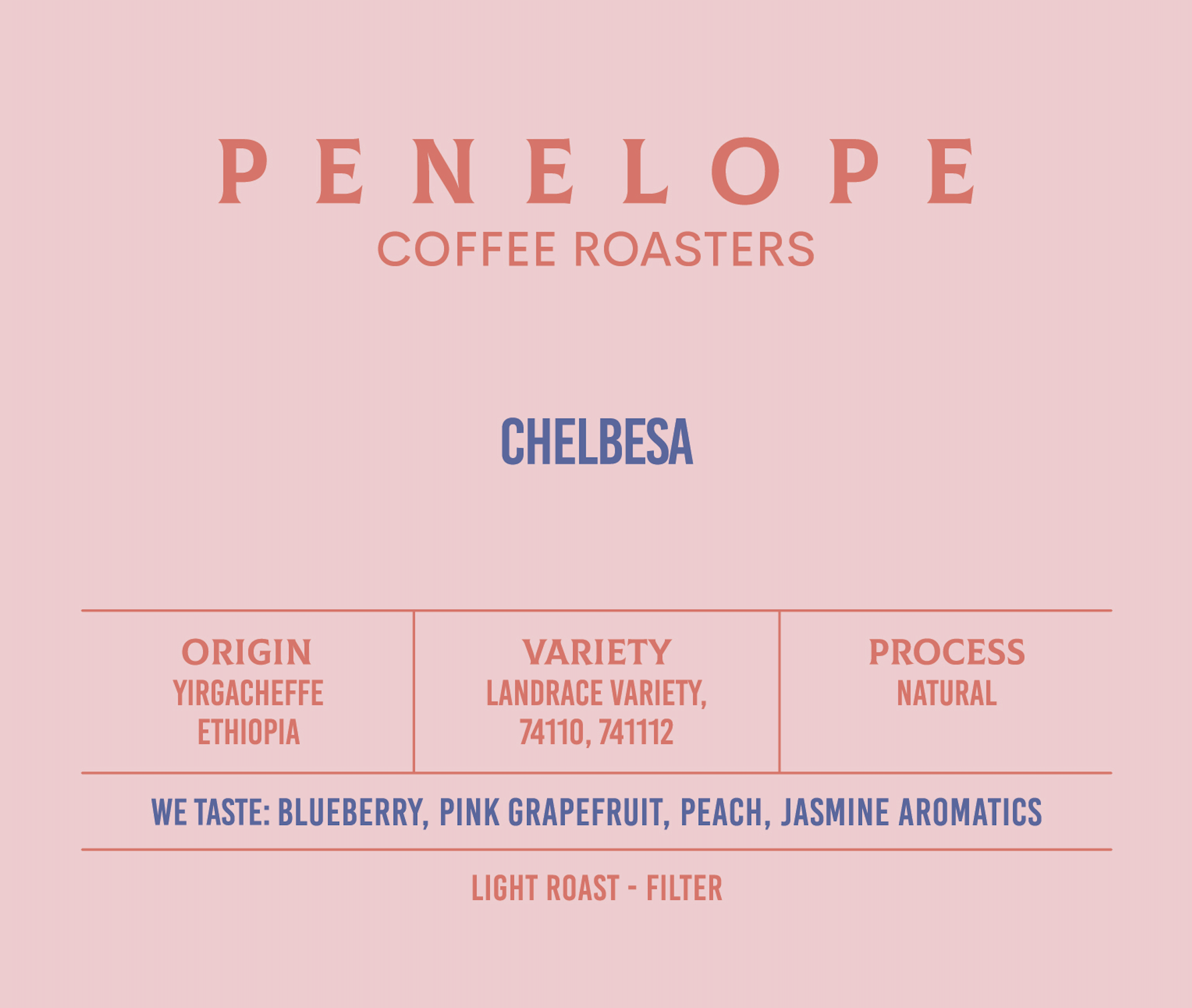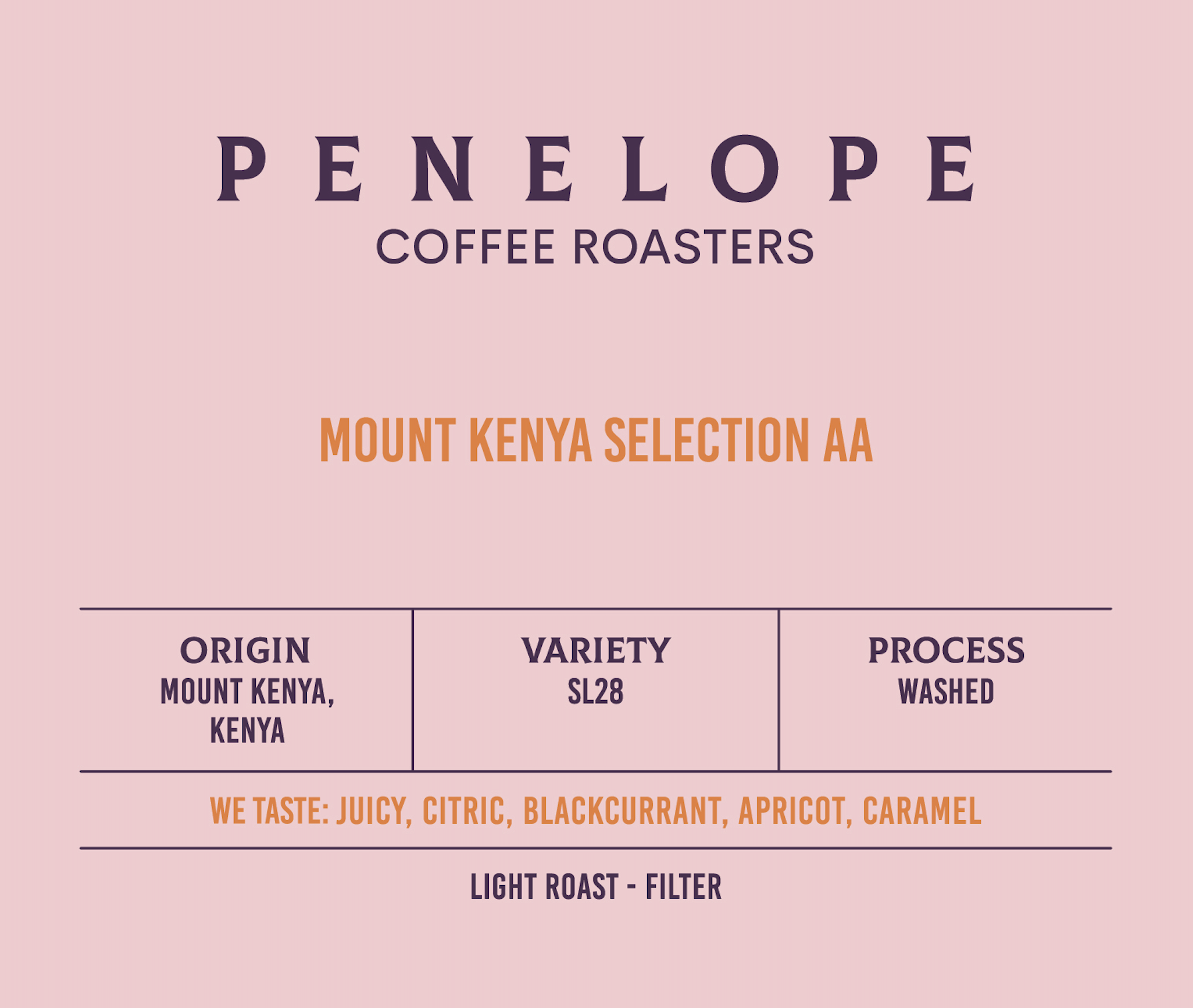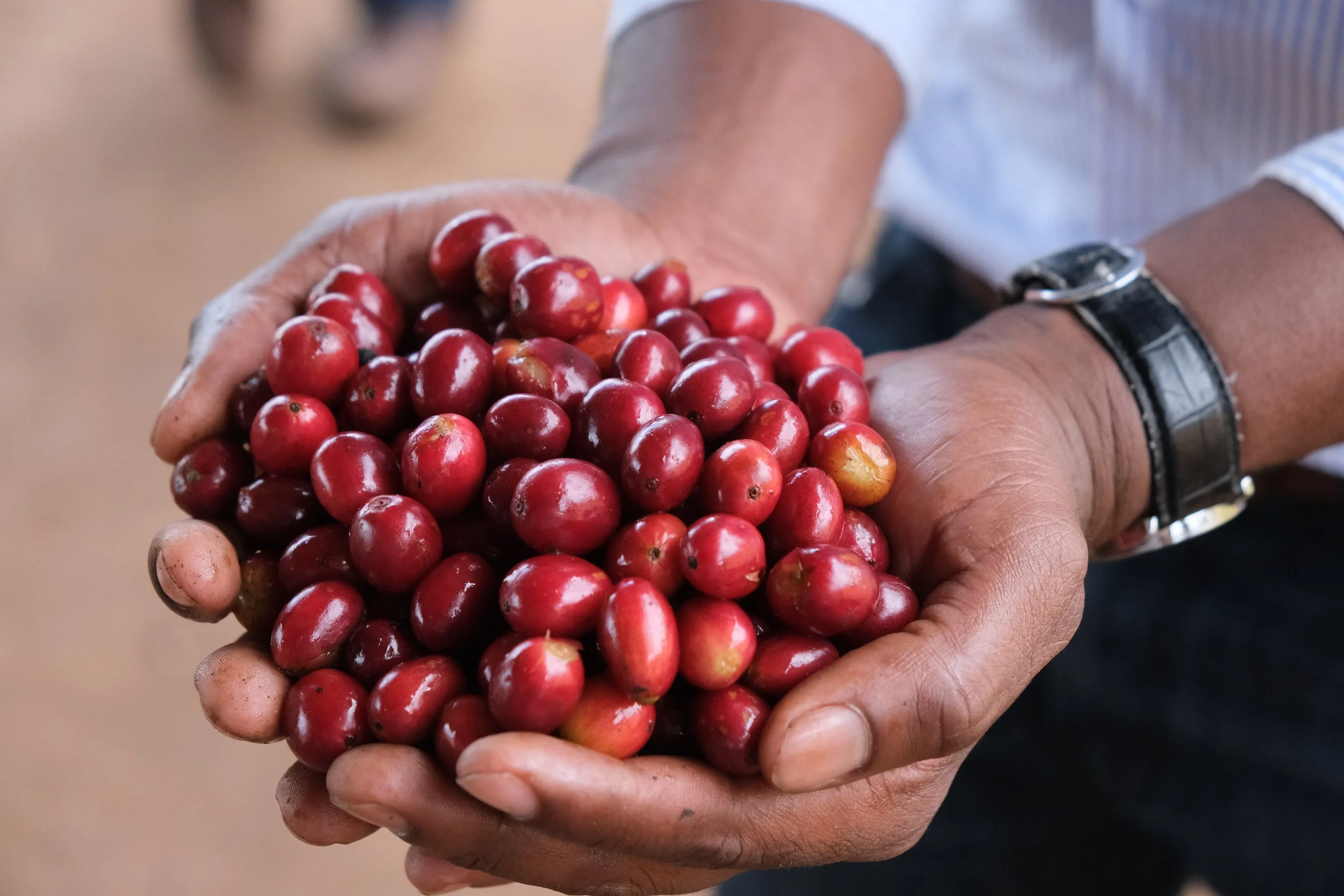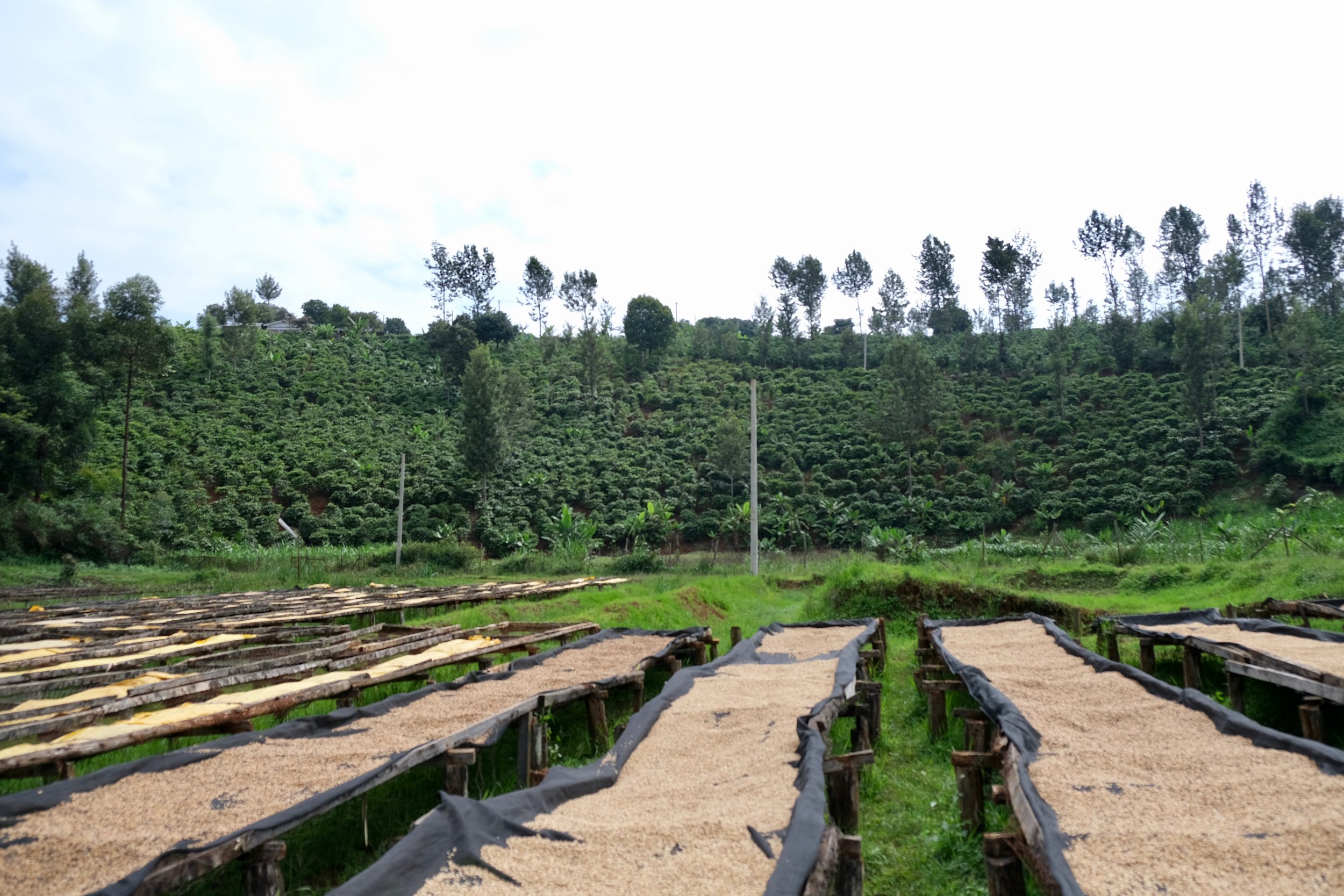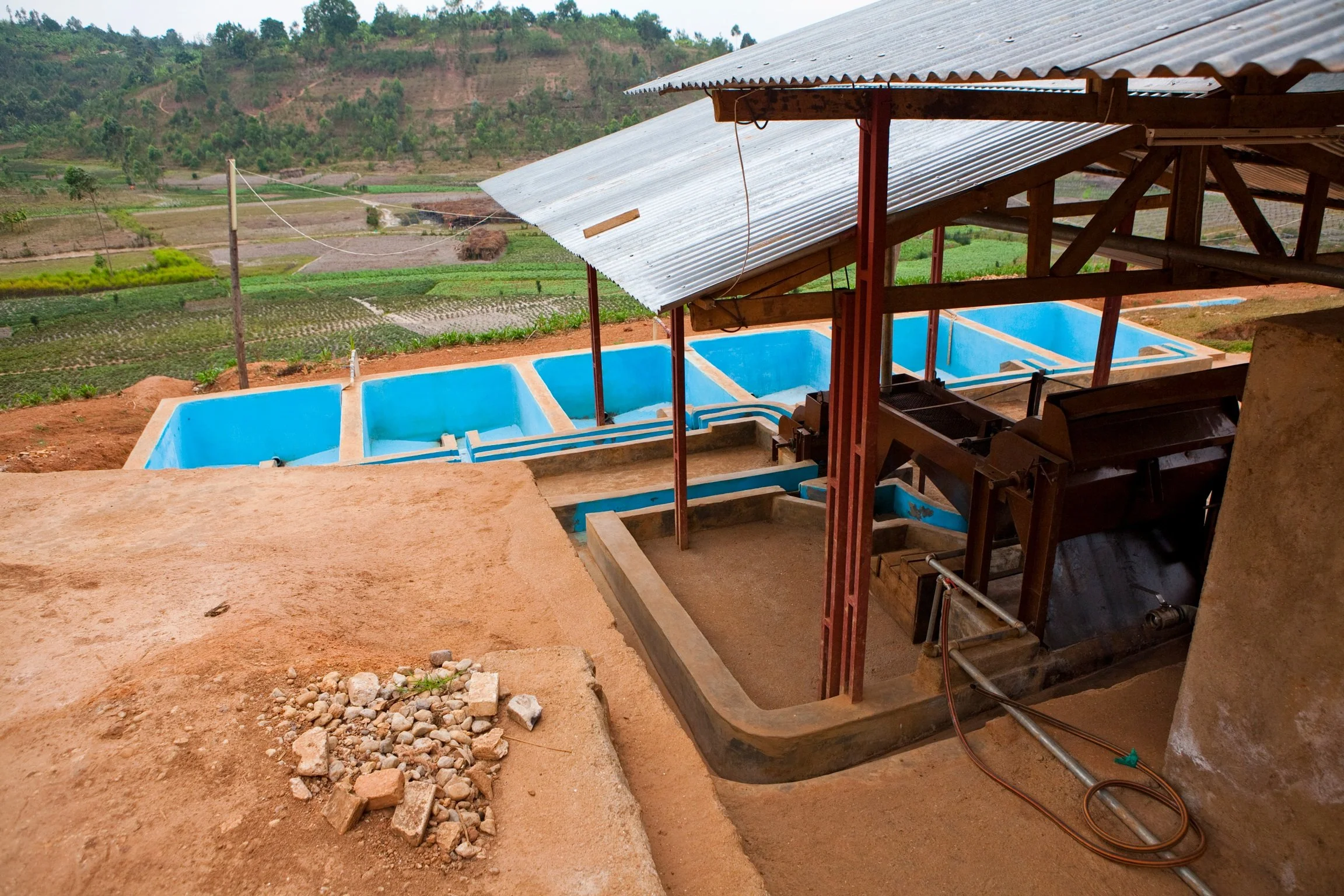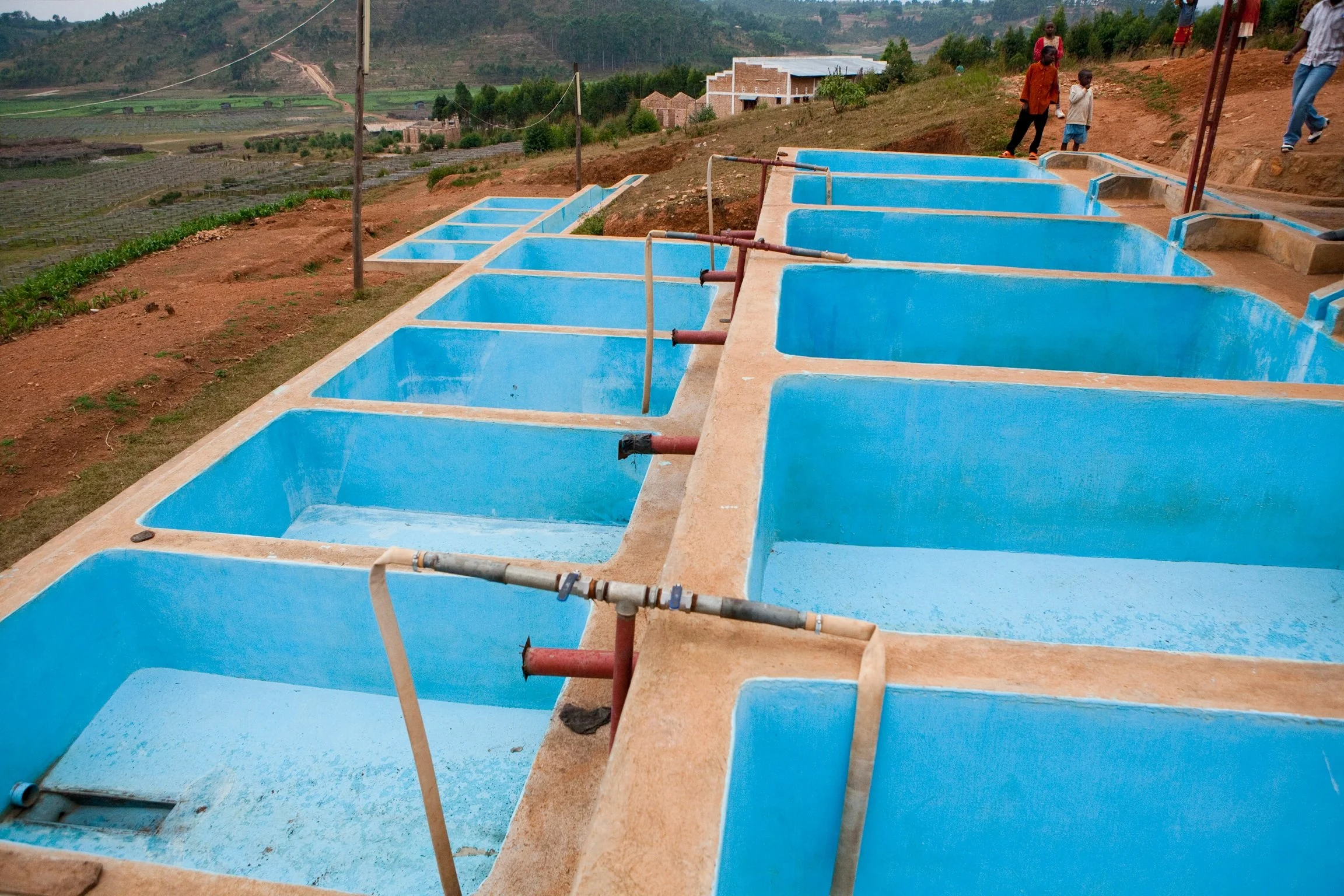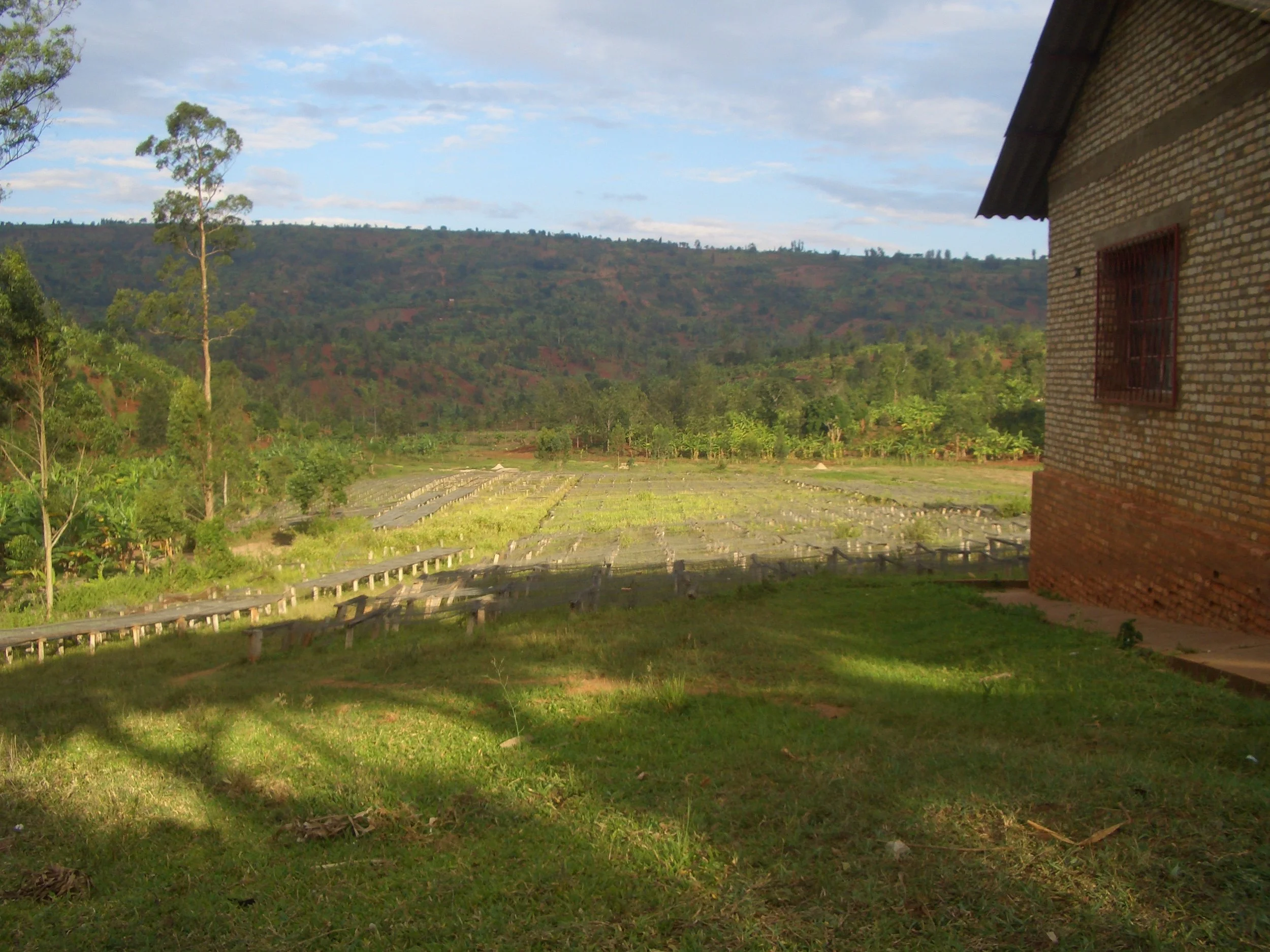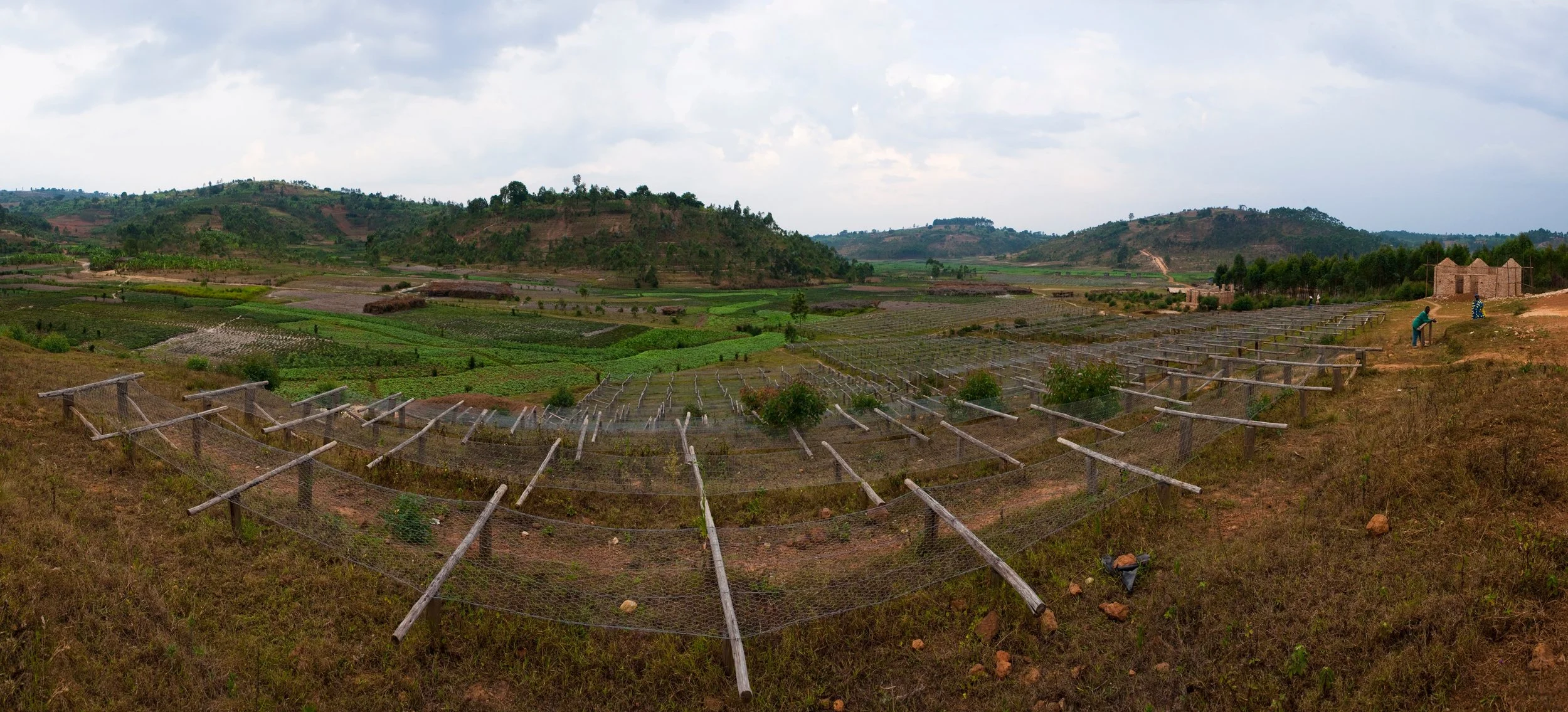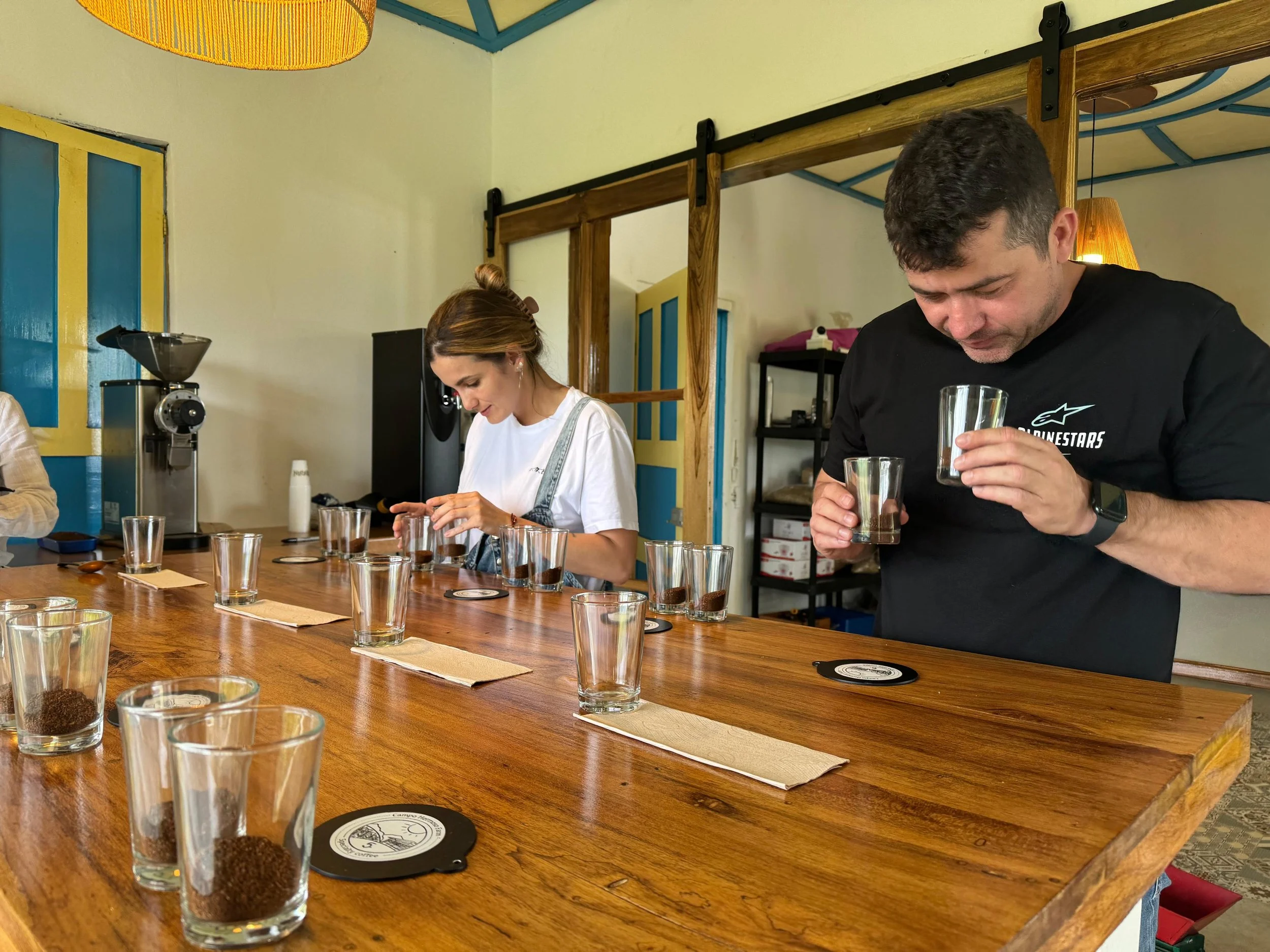
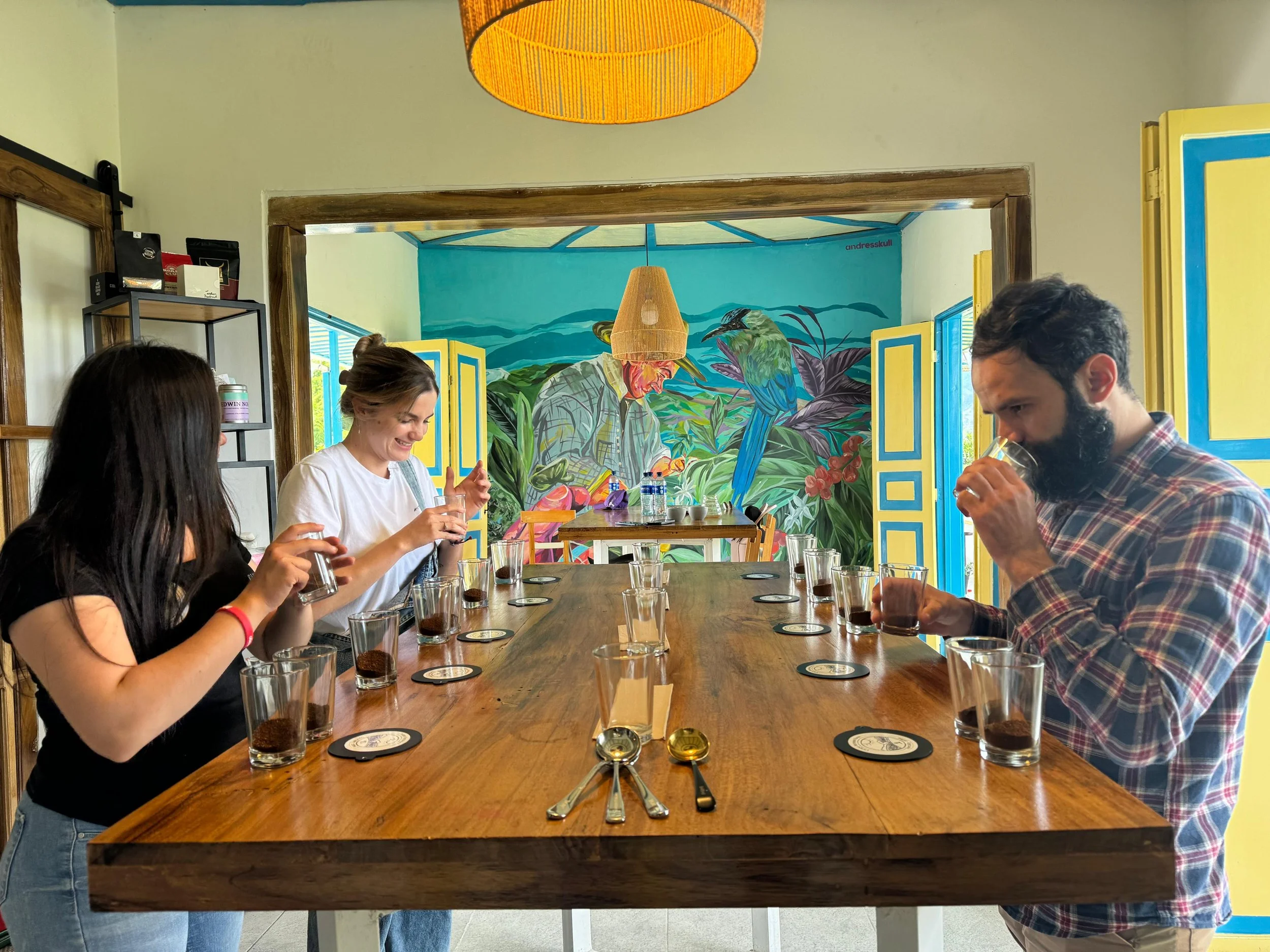

COLOMBIA | LYCHEE CO-FERMENT | CAMPO HERMOSO
Located in Circasia, Quindío, Colombia, the Finca Campo Hermoso is operated by producer and agro-industrial engineer Edwin Noreña, a third-generation coffee grower known for innovation in processing and specialty lots. The farm combines high-altitude cultivation with experimental post-harvest techniques to push the boundaries of Colombian specialty coffee. Triple-stage ferment + co-ferment with lychee fruit, honey-style finish.
Process Description
The Lychee Co-Ferment from Finca Campo Hermoso is an ambitious and high-intervention lot designed to highlight the interplay between meticulous post-harvest control and creative flavour engineering.
Step 1: Harvest & Initial Fermentation
Hand-picked cherries are selected for uniform ripeness and quality. The first fermentation is carried out in full cherry form in sealed tanks for approximately 96 hours, allowing sugars to concentrate and natural microbial activity to develop. A “must” runoff is collected — analogous to a grape-must in winemaking — rich in sugars and microbial by-products.
Step 2: Depulping & Secondary Fermentation
After the initial whole-cherry stage the fruit is depulped and moved into a second fermentation of about 48 hours under anaerobic conditions. Simultaneously, the previously collected must is infused with dried lychee fruit and fermented independently to craft a bespoke aromatic solution.
Step 3: Final Co-Ferment & Drying
The parchment coffee is submerged ~30 % in the lychee-must solution for an additional ~48 hours, allowing infusion of the lychee-derived aromatic compounds and controlled microbial activity. Following this, the coffee is dried on raised beds (or in a solar drying system) for approximately 10 days to reach ~10–11 % moisture. After drying, the beans are rested ~8 days in a controlled warehouse, then stabilised in GrainPro bags.
Located in Circasia, Quindío, Colombia, the Finca Campo Hermoso is operated by producer and agro-industrial engineer Edwin Noreña, a third-generation coffee grower known for innovation in processing and specialty lots. The farm combines high-altitude cultivation with experimental post-harvest techniques to push the boundaries of Colombian specialty coffee. Triple-stage ferment + co-ferment with lychee fruit, honey-style finish.
Process Description
The Lychee Co-Ferment from Finca Campo Hermoso is an ambitious and high-intervention lot designed to highlight the interplay between meticulous post-harvest control and creative flavour engineering.
Step 1: Harvest & Initial Fermentation
Hand-picked cherries are selected for uniform ripeness and quality. The first fermentation is carried out in full cherry form in sealed tanks for approximately 96 hours, allowing sugars to concentrate and natural microbial activity to develop. A “must” runoff is collected — analogous to a grape-must in winemaking — rich in sugars and microbial by-products.
Step 2: Depulping & Secondary Fermentation
After the initial whole-cherry stage the fruit is depulped and moved into a second fermentation of about 48 hours under anaerobic conditions. Simultaneously, the previously collected must is infused with dried lychee fruit and fermented independently to craft a bespoke aromatic solution.
Step 3: Final Co-Ferment & Drying
The parchment coffee is submerged ~30 % in the lychee-must solution for an additional ~48 hours, allowing infusion of the lychee-derived aromatic compounds and controlled microbial activity. Following this, the coffee is dried on raised beds (or in a solar drying system) for approximately 10 days to reach ~10–11 % moisture. After drying, the beans are rested ~8 days in a controlled warehouse, then stabilised in GrainPro bags.













